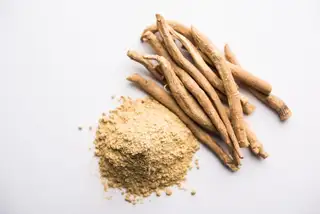
Understanding the Nutritional Value of Medicinal Herbs
Medicinal herbs have been an integral part of human health care for centuries, offering a natural approach to treating ailments and promoting well-being. The nutritional value of these plants is derived from a rich array of bioactive compounds that contribute to their therapeutic effects.
1. Phytochemicals: The Active Ingredients
At the heart of medicinal herbs are phytochemicals, which include terpenes, alkaloids, glycosides, and polyphenols. These compounds are responsible for the plants' protective properties and their ability to combat various health conditions. For instance, alkaloids such as nicotine, found in tobacco, bind directly to nicotinic acetylcholine receptors in the body, accounting for its pharmacological effects .
2. Polyphenols: Antioxidant Powerhouses
Polyphenols, a type of phytochemical, are especially noteworthy for their antioxidant properties. They are widely spread in plants and include astringent tannins and hormone-mimicking phytoestrogens. Herbs containing phytoestrogens, such as Pueraria mirifica and anise, have been used for centuries to address gynecological issues .
3. Terpenes: Aroma and Medicinal Uses
Terpenes and terpenoids, known for their strong aromatic properties, are found in many medicinal plants. They play a role in plant defense against herbivores and are used in essential oils for their therapeutic effects. For example, thymol, found in Thymus vulgaris, has antiseptic properties and was once used as an anti-worm medicine .
4. Glycosides: Potent Compounds with Specific Actions
Glycosides, another class of phytochemicals, include cardiac glycosides like digitoxin and digoxin from foxglove, which support heart function and act as diuretics. Anthraquinone glycosides, found in plants like senna, are used as laxatives .
5. Nutritional Benefits of Medicinal Herbs
Medicinal herbs are not only used for their medicinal properties but also for their nutritional benefits. They are often rich in vitamins, minerals, and fiber, which are essential for maintaining a balanced diet and overall health.
6. Culinary Spices and Their Health Implications
Many culinary spices, such as turmeric and ginger, have medicinal properties and are used in traditional medicine. Curcumin in turmeric, for example, has been studied for its anti-inflammatory and anticancer properties .
7. The Role of Medicinal Herbs in Modern Medicine
Modern medicine has embraced the potential of medicinal herbs, with many drugs being derived from or inspired by natural compounds. Aspirin, digoxin, and quinine are examples of drugs that have their roots in plant medicine .
8. Challenges and Considerations
While medicinal herbs offer numerous health benefits, there are challenges in ensuring their safety, efficacy, and quality. Over-collection, habitat destruction, and climate change pose threats to the sustainability of medicinal plants. Additionally, the need for rigorous scientific research to validate traditional uses and assess the pharmacological actions of these plants is paramount .
Conclusion
Understanding the nutritional value of medicinal herbs is crucial for harnessing their potential in promoting health and treating diseases. As we continue to explore and appreciate the therapeutic potential of these plants, it is important to approach their use with a balance of traditional wisdom and scientific scrutiny. The integration of medicinal herbs into modern healthcare practices offers a holistic and complementary approach to wellness.





